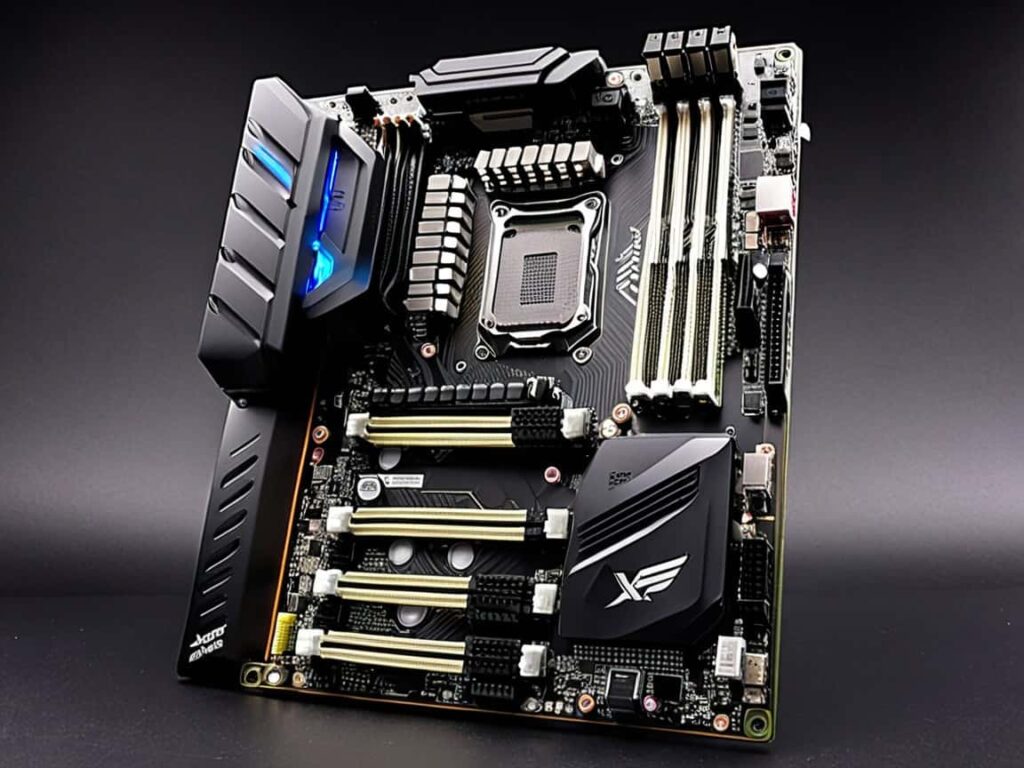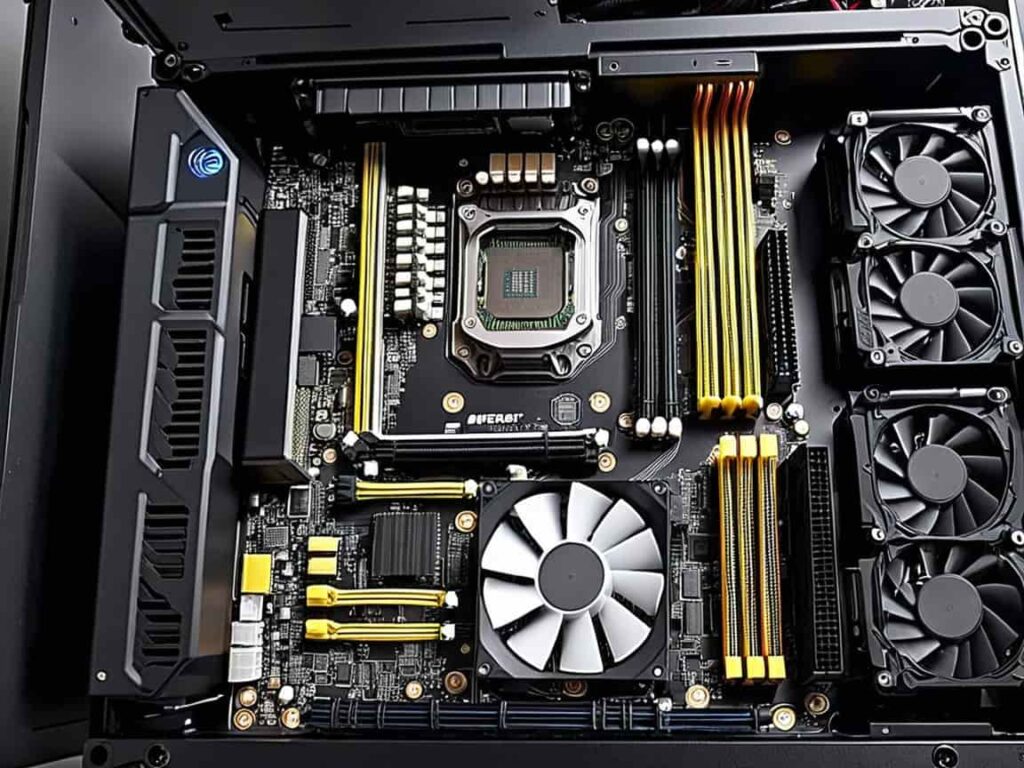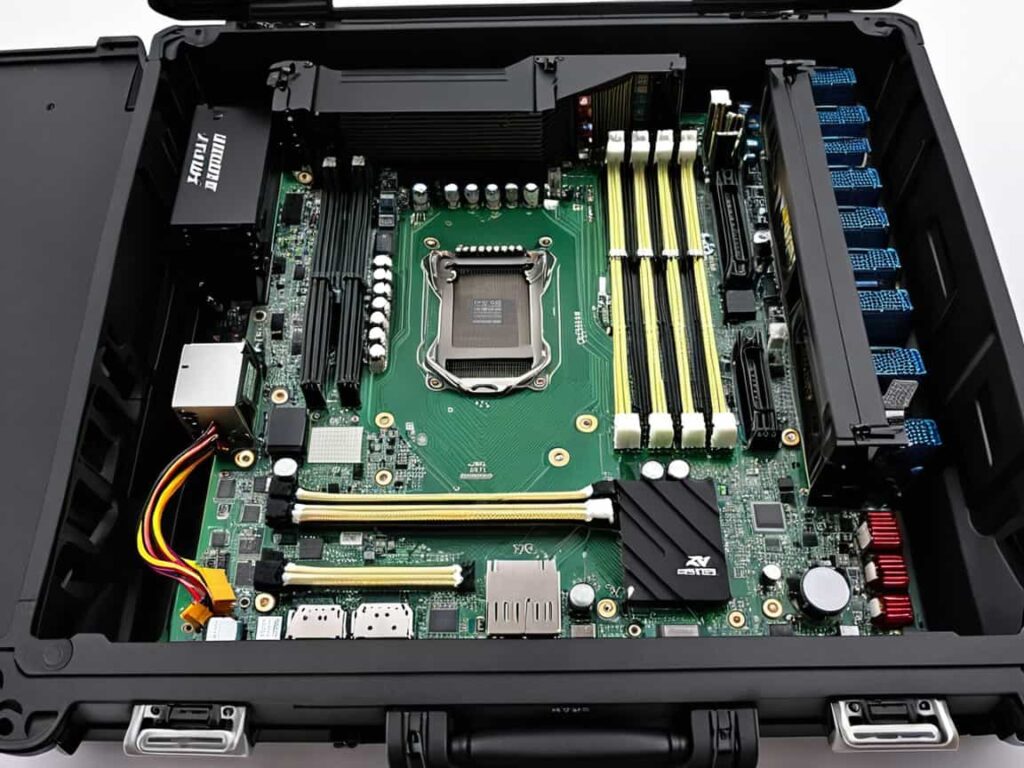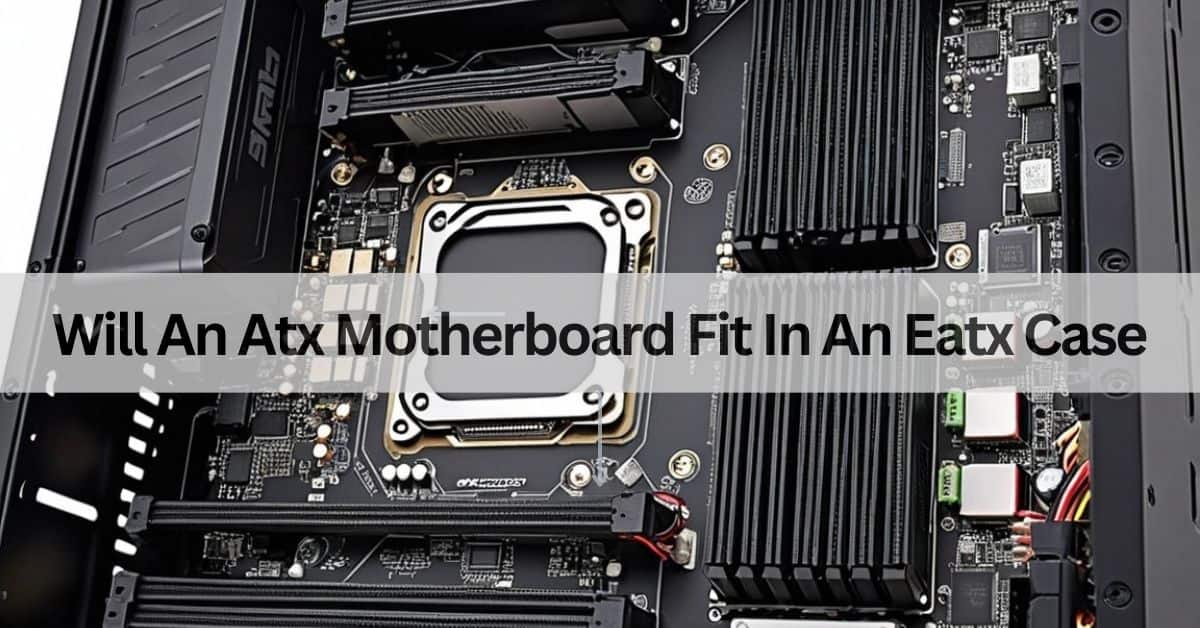I recently upgraded my PC and wondered, will an ATX motherboard fit in an EATX case? Turns out, it fits perfectly with plenty of room for airflow and cable management. If you’re considering this setup, you’ll love the extra space for future upgrades!
Yes, an ATX motherboard will fit in an EATX case. EATX cases are larger and designed to support both ATX and EATX motherboards, giving extra space for better airflow and cable management. Just ensure the case has the correct mounting points for your ATX board.
This article will discuss “Will An Atx Motherboard Fit In An Eatx Case”.
Table of Contents
Understanding Will An Atx Motherboard Fit In An Eatx Case?

Yes, an ATX motherboard will fit in an EATX case because EATX cases are larger and designed to support both EATX and smaller motherboard sizes like ATX. You’ll just need to ensure the mounting points and connections align properly for easy installation.
Read More: How To Tell If The Motherboard Supports Pcie X4? – Here’s How To Find Out!
What is an ATX Motherboard?
An ATX motherboard is a standard-sized computer motherboard designed for desktops. It offers features like a better layout for components, good airflow, and multiple expansion slots for upgrades. Popular with PC builders, it supports modern processors, RAM, and other hardware for reliable performance.
Does ATX fit into E-ATX?
No, an ATX motherboard doesn’t fit properly into an E-ATX case because E-ATX cases are designed for larger motherboards. While the mounting holes might align, extra space can cause cable management issues. Always check the case’s compatibility with your specific motherboard size.
What cases can fit an ATX motherboard?
1. Full-Tower Cases
- Designed to fit larger motherboard sizes, including ATX, EATX, and micro-ATX.
- Offer ample space for additional components like GPUs, cooling solutions, and multiple storage drives.
- Ideal for high-performance builds with advanced cooling setups or custom water cooling loops.
2. Mid-Tower Cases
- The most popular case size is widely compatible with ATX motherboards.
- Strike a balance between size, airflow, and ease of installation.
- Suitable for most gaming and productivity builds.
3. Mini-Tower Cases
- Some mini-tower cases support ATX motherboards, though many are designed for micro-ATX or mini-ITX boards.
- Ensure the case specifications explicitly mention ATX compatibility.
- May have limited space for extra components or cooling solutions.
What is the difference between E-ATX and ATX case?
An E-ATX case is bigger than an ATX case, designed for healthy Extended-ATX motherboards. It presents extra areas for additives like greater snap shots playing cards or cooling systems. ATX instances are smaller, appropriate for standard-sized motherboards, and are best for compact builds.
How do I realize if my motherboard is ATX or E-ATX?
To take a look at in case your motherboard is ATX or E-ATX, determine its width and height. An ATX board is 12 x 9.6 inches, while the same time as E-ATX is bigger at 12 x thirteen inches. You also can take a look at the version information on the motherboard or its manual.
Can an ATX Motherboard Fit Inside an EATX Case?
Yes, an ATX motherboard can be healthy inner an EATX case due to the fact that EATX instances are large and designed to assist more than one motherboard size. You`ll have greater area, which may be beneficial for higher airflow or extra additives, however, the motherboard will appear smaller inner.
Are There Any Compatibility Issues Using an ATX Motherboard in an EATX Case?
1. Mounting Holes Alignment
- ATX motherboards use a standard layout for mounting holes, which is supported by most EATX cases.
- Check that the EATX case has pre-drilled holes for ATX motherboards. This information is usually listed in the case’s specifications.
2. Standoff Placement
- Standoffs in the case need to align with the mounting holes of the ATX motherboard.
- Most EATX cases include adjustable or pre-installed standoffs for ATX compatibility.
3. Cable Reach
- The larger size of an EATX case can mean longer cable runs for power, SATA, or front panel connections.
- Ensure your PSU cables and other connectors are long enough to reach the ports on your ATX motherboard.
Will Installing an ATX Motherboard in an EATX Case Affect Cooling?

1. Increased Airflow Space
- EATX cases are larger and designed to accommodate bigger components, which often results in more room for airflow.
- The additional space around the ATX motherboard allows for better circulation of air, potentially improving cooling performance.
2. Compatibility with Larger Fans and Radiators
- EATX cases usually support larger fans and radiators, providing better options for air or liquid cooling setups.
- Using these cooling solutions can enhance heat dissipation for the smaller ATX motherboard.
3. Reduced Heat Concentration
- Since an ATX motherboard occupies less space in an EATX case, the heat generated by components is spread out across a larger area, reducing hotspots.
- This can help maintain lower overall temperatures for the system.
Read More: How Long Do Motherboard Batteries Last – Shocking Facts Inside!
ATX size mobo in EATX case?
Yes, an ATX motherboard can suit an EATX case, however the case could have more area. EATX instances are large and designed to aid larger motherboards, so an ATX board will suit with room to spare. Just make certain to test case compatibility for different components.
Would an ATX Motherboard suit in an eATX case?
Yes, an ATX motherboard can suit an eATX case, as eATX instances are designed to be large and may accommodate each eATX and ATX motherboard. Just make sure the case has a sufficient area on your components, as eATX instances provide greater room for additional hardware.
Will ATX mobo suit the eATX case?
No, an ATX motherboard will now not fit an eATX case without issues. eATX times are designed to cope with big motherboards, so at the same time as an ATX motherboard might also additionally fit, there won`t be enough place for proper airflow or cable control. Always check the case specifications first.
ATX board match in the eATX case?
Yes, an ATX motherboard can match in an eATX case, as eATX instances are large and designed to aid each ATX and eATX motherboard. However, ensure the case is well suited to the precise dimensions of your ATX board for correct installation.
Using a vintage ATX case for an E-ATX motherboard?
Using a vintage ATX case for an E-ATX motherboard can work, however, it is probably tight. E-ATX motherboards are larger than trendy ATX boards, so take a look at if the case has sufficient area. You might also want to alter cable control or alter the case.
Can a complete ATX motherboard match in a mid-tower?
Yes, a complete ATX motherboard can match in a mid-tower case, so long as the case helps ATX size. Most mid-tower instances are designed to deal with ATX motherboards, however, it`s constantly excellent to test the case’s specs to ensure a right match.
Will There Be Extra Space in an EATX Case When Using an ATX Motherboard?

Yes, there could be a greater area in an EATX case while the use of an ATX motherboard. EATX instances are designed to match large motherboards, so while you operate a smaller ATX motherboard, you may have greater room for higher airflow and further components.
Read More: White Light On Motherboard – Quick Solutions Inside!
FAQs:
1. What is the distinction between ATX and EATX motherboards?
An EATX motherboard is bigger than an ATX motherboard, providing an extra area for added components. ATX is extra not unusual and suits maximum fashionable instances, whilst EATX calls for large instances.
2. Can an ATX motherboard suit in an ordinary case?
An ATX motherboard will suit anyhow that helps ATX length, which includes fashionable ATX instances. However, it’ll now no longer suit instances intended for smaller motherboards like Micro-ATX.
3. What length case do I want for an EATX motherboard?
To accommodate an EATX motherboard, you want a case specially designed for EATX or large. Regular ATX instances won`t suit an EATX motherboard.
4. Is there extra room in an EATX case than in an ATX case?
Yes, EATX instances are large and offer an extra area for components, higher cable management, and stepped-forward airflow as compared to conventional ATX instances.
Conclusion:
Using an ATX motherboard in an EATX case affords more area, enhancing airflow and making an allowance for higher cable management. While an ATX motherboard suits easily in maximum instances designed for it, an EATX case gives extra flexibility for destiny enhancements and further components. If you`re making plans to improve or need extra room for cooling, choosing an EATX case may be an excellent choice.
